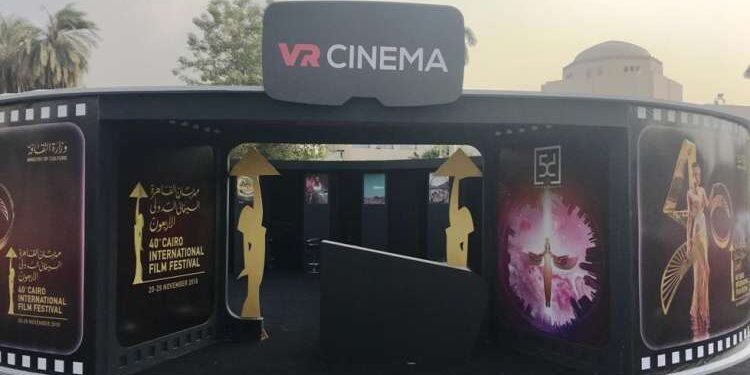Virtual reality was among the activities offered during the 40th edition of the Cairo International Film Festival (CIFF) which took place from November 20 to 29, 2018. Indeed, three panels were organized to deal with the subject and a dozen cabins were made available to the public to “live” short films in virtual reality.
Virtual reality is a computer technology that simulates the physical presence of a user in an environment generated by software. This user can be passive or interact with this environment. Virtual reality allows a sensory experience that can include sight, touch, hearing and smell.
While at its beginnings, this technology concerned almost exclusively video games or virtual visits from various sites or museums, it begins to appear in the cinema.
Why did you choose to offer these films in virtual reality at the Cairo International Film Festival?
To this question, Ahmed Shawky, film critic and artistic director of the festival replied: “The biggest film festivals are increasingly interested in virtual reality. In 2017, the film Carney y arena (virtually present, physicalely invisible)from Alejandro González Iñárritu, one of the most important directors in the world and who used virtual reality to make his film, has been part of the official out -of -competition selection of the 70th Edition of the Cannes Film Festival.
The Venice Festival has also had a special section for two years for virtual reality films.
Virtual reality is a technological and creative advance, it is an added to the tools of the director who can thus make the spectator live the experience in total immersion in a film. Professionals who use virtual reality do it with passion, every second requires immense work to be done.
The Cairo Festival has always wanted to be a modern festival, which takes place in 2018 and not in the 1970s and 1980s, a festival that accompanies the film industry on all fronts. There was therefore a virtual reality section. I think it will continue in the next few years because virtual reality has attracted many spectators: from 2 p.m. to 10 p.m. it’s full, and it is very difficult to find a place. They all want to use it and try it. It is true that most spectators still consider it as a game, but little by little they will start to realize that it is a new form of cinema. ”
CIFF – Catalog of films offered in virtual reality
I personally saw three short films in virtual reality. One, interactive, Nefertari, Journey to Eternity From Elliot Mizroch (USA), was the visit of the tomb of Nefertari, and we had to walk, move, bend down … as if we really visited the grave, and it was relatively difficult because we had to stay in a precise virtual setting, but I was involuntarily leaving since not used to this kind of exercise.
I also tried Wild Immersion by Adrien Moisson and Raphael Aupy (Great Britain, France), which is a safari among the jungle animals. It was very interesting, it made it possible to see the animals, observe them very closely in their habitat, without disturbing them or taking risks. You can’t help but move back instinctively when animals approach too closely.
I also saw Home after war From Gayatri Parameswaran (Germany, USA, Iraq) a short film on the post war in Iraq, and there it is much more disturbing, because not only are we parachuted in the middle of battlefields and ruins, but in addition, we end up with humans who speak to us. Personally it made me a little uncomfortable to find myself in the midst of these people, especially in their homes, as if I had been a voyeur who arrives in their intimacy.
Virtual reality is great for visits without leaving your house, like the visit of the tomb of Nefertari, or making a safari while staying on its sofa … Imagine as it could represent for people who cannot travel or even move!
One can also think of using this technology for humanitarian films, trying to put the spectator in real conditions and allow him to feel empathy or any other emotion.
Can we imagine that virtual reality is the future of cinema? In particular with regard to Fiction cinema? Would the spectator want to get out of his comfortable chair and join a film? Does he have the courage to live in a film? Could he find himself in a crime scene? Or within a family? Or in the process of elucidating an enigma? Could virtual reality replace traditional cinema or would it invent a new kind of interactive cinema?
According to Ahmed Shawky, so far, there have not been any feature films turned into virtual reality because it takes a lot of time and very very important means. All the films that were made in virtual reality are this format of 10 to 15 minutes maximum. But it is obvious that filmmakers will be interested in this technology and that soon, there will be fiction feature films allowing spectators, who wish, a total immersion in the films, but he thinks that in no case that will replace traditional cinema.
“As there are films in 3D and 4D and as there are new experiences, new tools and new technologies, there will be a cinema in virtual reality, but I think spectators will always prefer classic cinema while going from time to time going to see these films there, especially that some are impressive, like precisely films shot in Africa, in full safari, with animals all around …”.
Neila Driss
Read on the same subject:










